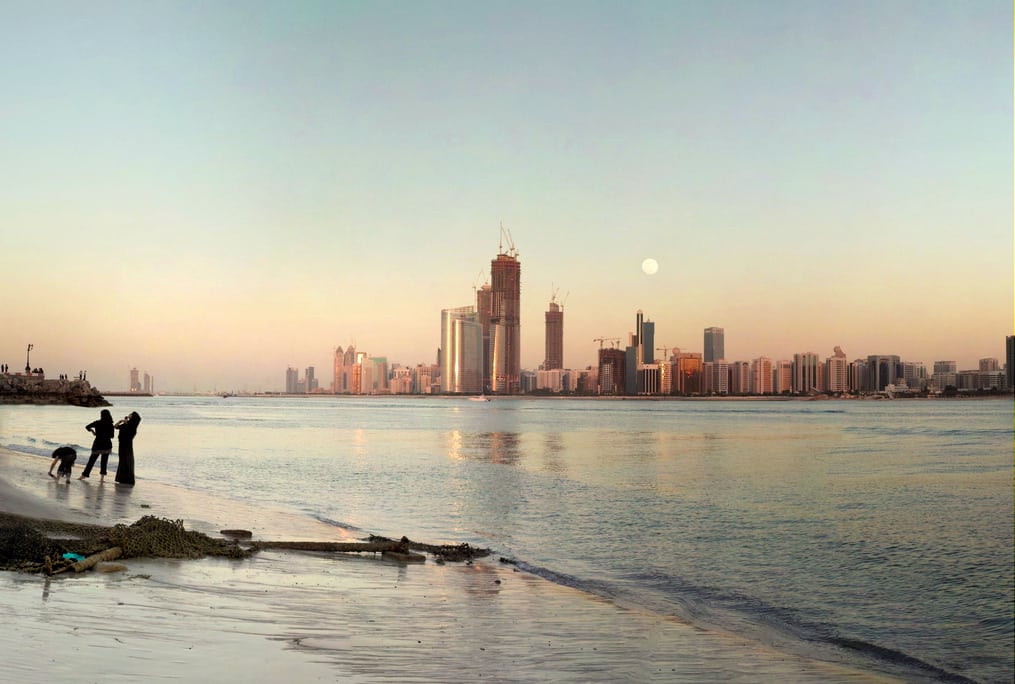The rise of Middle East aviation hubs is a feat of geography

Skift Take
It's 1 a.m. and the sprawling airport in this desert city of Dubai is bustling. Enough languages fill the air to make a United Nations translator's head spin.
Thousands of fliers arrive every hour from China, Australia, India and nearly everywhere else on the planet. Few venture outside the terminal, which spans the length of 24 football fields. They come instead to catch connecting flights to somewhere else.
If it weren't for three ambitious and rapidly expanding government-owned airlines — Emirates Airline, Etihad Airways and Qatar Airways — they might have never come to the Middle East.
For generations, international fliers have stopped over in London, Paris and Amsterdam. Now, they increasingly switch planes in Dubai, Doha and Abu Dhabi, making this region the new crossroads of global travel. The switch is driven by both the airports and airlines, all backed by governments that see aviation as the way to make their countries bigger players in the global economy.
Passengers are won over by their fancy new planes and top-notch service. But the real key to the airlines' incredible growth is geography. Their hubs in Qatar and the United Arab Emirates are an eight-hour flight away from two-thirds of the world's population, including a growing middle class in India, China and Southeast Asia that is eager to travel.
In the past five years, the annual number of passengers traveling through Dubai International Airport — home to Emirates — has jumped from 28.8 million to 51 million, a 77 percent increase. The airport now sees more passengers than New York's John F. Kennedy International Airport.
"Everybody accepts that the balance of global economic power is shifting to the east. The geographic position of the Gulf hubs makes them much more relevant today," says Willie Walsh, CEO of International Airlines Group, the parent company of British Airways and Iberia.
Persian Gulf carriers are already chipping away at some U.S. and European airlines' most lucrative business: long-haul international flights. But it's what's ahead that really has other airlines worried.
Gulf carriers hold one-third of the orders for the Boeing 777 and Airbus A380 — two of the world's largest and farthest-flying jets. That's enough planes to put 70,000 passengers in the air at any given moment.
"They're being very aggressive," says Adam Weissenberg, who heads the travel and hospitality consulting group at Deloitte. "These airlines are not going away."
Modern day air routes can be traced to the post-World War II era when airlines such as Pan Am and British Airways built the first global networks. Flights from New York would cross the Atlantic, stop in Europe's capital cities to refuel and then head on to Africa, India and eventually Asia. Two generations later, those routes mostly remain.
The Gulf carriers are trying to change that. And they have a lot going for them.
Their hubs are in warm climates with little air-travel congestion and cheap, non-union workers. That means runways never shut down because of snow, planes don't circle waiting for their turn to land and flights aren't canceled by labor strikes as they often are in Europe.
"These guys are making the connection as seamless as possible," says John Thomas of L.E.K. Consulting.
Top-paying passengers are given over-the-top service that bolsters the airlines' reputations. On some Emirates planes, first-class passengers get private suites with doors, a 23-inch television, minibar and a phone to call flight attendants. If that's not enough, a "Do Not Disturb" sign can be switched on.
There are spa-like restrooms with heated floors and a shower.
But what really makes these Persian Gulf airlines unique is their focus on direct flights to smaller cities. The hub system they are developing is similar to what U.S. airlines did a generation ago, which allowed passengers to fly from, say, Knoxville, Tenn. to Sacramento, Calif. with just one connection.
"Forget Mumbai and New Delhi. There's another 40 secondary cities in India that I can take advantage of," says Etihad CEO James Hogan.
Airlines and governments in North America and Europe have been fighting back where they can.
In Canada, the government has limited the number of planes that Etihad, Emirates and Qatar can land at its airports. The move protects Air Canada, and its partner Lufthansa, which have a good business flying Canadians to India, Africa and Asia.
Separately, Lufthansa has tried to block the Gulf carriers' access to German airports. Etihad responded by purchasing 29 percent of rival Air Berlin, gaining entry to key European cities. It also owns 40 percent of Air Seychelles and smaller stakes in Virgin Australia and Irish carrier Aer Lingus.
"Working against us or trying to isolate us will not succeed because there is a very clear vision behind these airlines and we will keep on expanding," says Qatar's CEO Akbar Al Baker.
There has been a recent thaw. Emirates struck a 10-year deal with Australian airline Qantas; Etihad partnered with Air France-KLM on some routes; and Qatar is joining a global airline marketing and frequent flier partnership headed up by American Airlines and British Airways.
Still, there is plenty of worry given the size of the Gulf airlines' jet orders and concerns that they are deeply subsidized by their governments.
European airlines have suggested that the Gulf carriers benefit from access to discounted oil, a favorable tax climate and non-union labor, particularly low-wage immigrant workers from India and Pakistan.
But the biggest perk comes from Middle East governments who are investing heavily in attractive, efficient airports.
The Qatari government is building a $15.5 billion airport in Doha, designed to handle 24 million people each year, nearly six times the capacity of the existing facility. In Abu Dhabi, the capital of the United Arab Emirates, the government is building a sprawling terminal twice the size of The Mall of America.
And construction was just completed in Dubai of a concourse designed exclusively for Emirates' fleet of Airbus A380s. The new building has entire floors dedicated to first and business class customers who board directly from lounges, never interacting with coach passengers.
"Governments here understand the power of connectivity to drive economies," Tony Tyler, CEO of the International Air Transport Association said in a recent speech in Abu Dhabi.
The airlines deny getting special treatment.
Emirates got $10 million in startup cash from the government in 1985. The airline's president, Tim Clark, says his airline has had no assistance since and benefits from economies of scale. The airline reported a net profit of $628 million in its last fiscal year.
"People keep saying we're cheats," he says. "What they can't understand is that something could be as good and profitable as it has been without subsidies. You know why? Because they've all had subsidies themselves and they still can't make it."
Clark says the U.S. government subsidizes airlines by allowing them to wipe out debt in bankruptcy court. All three of the largest U.S. airlines — American, Delta and United — have used the courts in the past decade to restructure.
European airlines stand to lose the most business because of their geography, but that doesn't mean that U.S. carriers aren't watching closely.
The three Gulf airlines already fly to Chicago, Dallas, Houston, Los Angles, New York, San Francisco, Seattle and Washington and are adding flights at breakneck pace. The airlines aren't just dipping their toes into these markets; they are diving in, in some cases with giant double-deck Airbus A380s that can seat 489 passengers.
"I think they are a clear threat, much more so to our European and Asian colleagues, but nonetheless a threat to U.S. airlines as well," Jeff Smisek, CEO of United Continental Holdings Inc., said at an investor conference last March. "They have a very good product. And they have the total and absolute support of their governments."
The airlines are not household names yet, but they will be soon, analysts say.
United was a key sponsor of the U.S. Open tennis tournament for more than a decade. But last year, Emirates took over with a seven-year deal reported to have cost $90 million.
___
Scott Mayerowitz can be reached at http://twitter.com/GlobeTrotScott.
![]()




